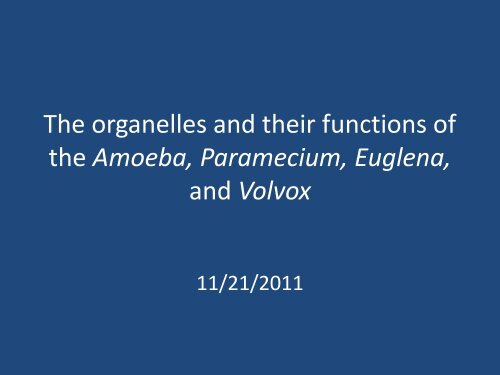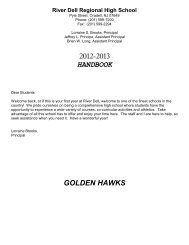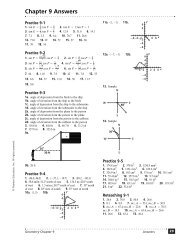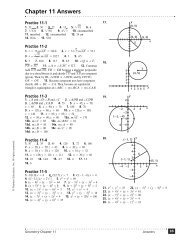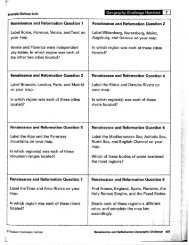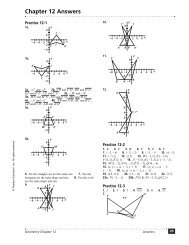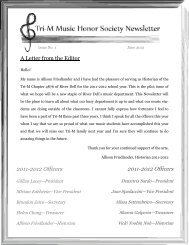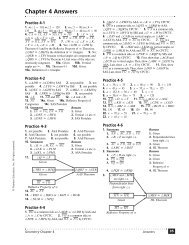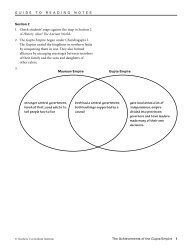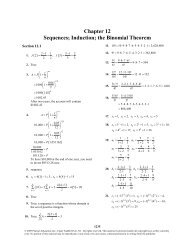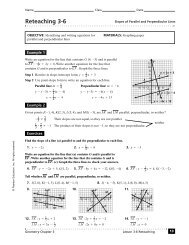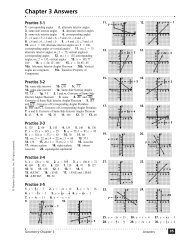protist powerpoint
protist powerpoint
protist powerpoint
Create successful ePaper yourself
Turn your PDF publications into a flip-book with our unique Google optimized e-Paper software.
The organelles and their functions of<br />
the Amoeba, Paramecium, Euglena,<br />
and Volvox<br />
11/21/2011
The Amoeba, Paramecium, Euglena, and Volvox<br />
All are <strong>protist</strong>s: eukaryotes that cannot be classified as animals,<br />
plants, or fungi.<br />
Classified by their movement and way of life.<br />
Movement<br />
• Amoeboid (pseudopodia)<br />
• Ciliate (cilia)<br />
• Flagellate (flagella)<br />
• Parasitic (attachment to a<br />
host cell)<br />
Way of Life<br />
• Autotrophic: make their own<br />
food (plantlike)<br />
• Heterotrophic: consume<br />
autotrophs or other<br />
heterotrophs (animal like)<br />
• Heterotrophic w/ cell walls and<br />
reproduce w/ spores (sort of<br />
animal and plantlike fungus<br />
like)
The Amoeba, Paramecium, Euglena, and Volvox<br />
Organelles in common<br />
• Nucleus<br />
• Cytoplasm<br />
• Food vacuoles: food that is being digested or<br />
broken down to provide the cell with energy.<br />
• Contractile vacuoles (vesicles): pump excess<br />
water from the cell; keeps water levels w/in<br />
the cell consistent.
The Amoeba, Paramecium, Euglena, and Volvox<br />
Differences in organelles<br />
Amoeba (0.25mm – 2.5mm)<br />
• Pseudopodia<br />
• Cell membrane<br />
• Endoplasm<br />
• Ectoplasm<br />
Paramecium (up to 2mm) *most<br />
complex<br />
• Cilia<br />
• Pellicle<br />
• Oral groove<br />
• Anal pore<br />
• Macronucleus<br />
• Micronucleus<br />
Euglena (15 – 500µm)<br />
• Flagella<br />
• Pellicle<br />
• Stigma/eyespot<br />
• Chloroplasts<br />
Volvox (can be large enough to be<br />
seen w/ the naked eye)<br />
• Flagella<br />
• Cytoplasm<br />
• Chloroplasts<br />
• Live in colonies
Moves by stretching its cytoplasm into<br />
finger like extensions or pseudopodia
Cell membrane is very flexible and<br />
allows the organism to change shape<br />
constantly.
Has 2 types of cytoplasm <br />
endoplasm and ectoplasm
Endoplasm granular inner mass; darker<br />
cytoplasm toward interior of the cell.
Ectoplasm absorb water and removes carbon<br />
dioxide clearer cytoplasm found near the cell<br />
membrane.
It pushes its endoplasm toward cell<br />
membrane to move and consume<br />
food.
Use cilia to aid in locomotion and gather food.<br />
Cilia extends out from pellicle.
Pellicle stiff but flexible covering gives the<br />
organism its shape.
Most complex single celled organism with two nuclei:<br />
macronucleus & micronucleus
Macronucleus larger nucleus, controls everything, but<br />
reproduction.
Micronucleus smaller nucleus, controls<br />
reproduction (asexually through binary fission and/or<br />
sexually through conjugation).
Oral groove collect food w/ the aid of cilia
Anal pore expel wastes
Flagellum used to aid in locomotion<br />
may have more than one
Pellicle flexible surrounding<br />
envelope that allows the organism to<br />
change shape.
Can absorb food directly through the pellicle or<br />
produce food through photosynthesis – food is<br />
stored as a complex carbohydrate.
Eyespot/stigma detects light to aid<br />
the organism in finding sunlight for<br />
food production.
Chloroplast trap sunlight to be used<br />
for photosynthesis.
Nucleolus contains the nucleus of<br />
the cell.
Volvox: common single celled pond algae that consists<br />
of one or more colonies.
Each cell uses its flagella simultaneously to<br />
move the colony.
Absorb food through the cell surface or produce<br />
it through photosynthesis through use of<br />
chloroplasts and store it as a complex<br />
carbohydrate.


